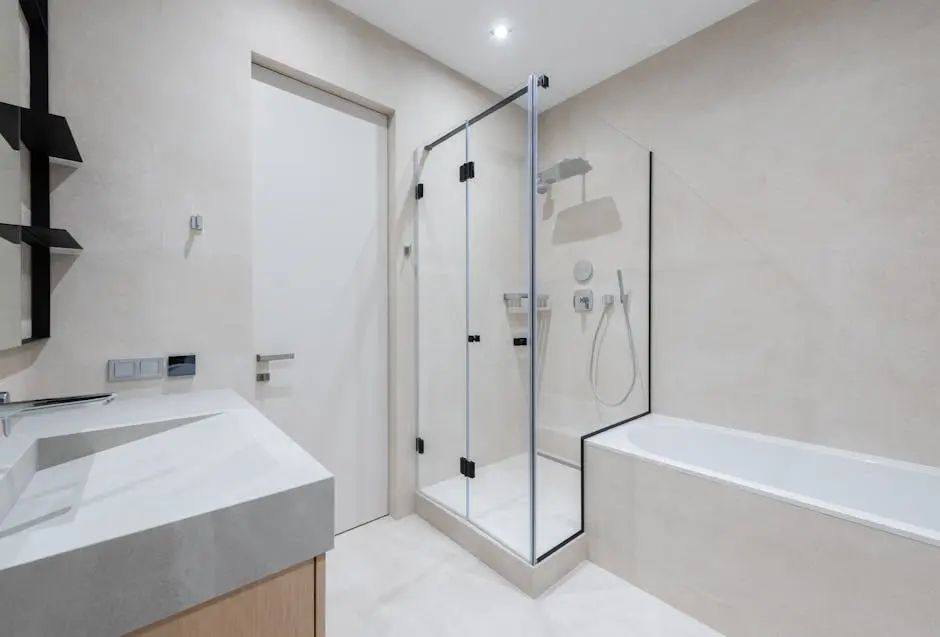How Do Wet Rooms Compare to Traditional Bathrooms?
In recent years, wet rooms have gained popularity as a modern alternative to traditional bathrooms. But what exactly are wet rooms, and how do they stack up against their traditional counterparts? In this blog, we’ll explore the key differences, benefits, and considerations to help you decide which option is best for your home.
What is a Wet Room?
A wet room is a modern bathroom design where the shower area is integrated into the overall space without a shower tray or enclosure. Instead, it features a fully waterproofed floor and walls.
The main appeal of wet rooms lies in their seamless look. They create a sense of space and flow as water is contained within the room. Everything is designed with an open concept in mind, offering flexibility for layout and style that can be quite refreshing.
Wet rooms are particularly ideal for smaller spaces. By eliminating bulky fixtures like bathtubs and shower screens, they can make a compact area feel larger while ensuring comfort and design appeal.
Traditional Bathroom Features
Traditional bathrooms typically feature distinct areas for bathing, showering, and sometimes, separate toilet facilities. They often include bathtubs, framed glass showers, and a variety of cabinetry options.
A hallmark of traditional bathrooms is the plethora of design styles available. From Victorian and Mediterranean to contemporary designs, these bathrooms can be tailored to fit almost any aesthetic preference.
Moreover, traditional bathrooms often provide more storage solutions, including cabinets and vanities. This flexibility lets homeowners organize their space tremendously well and can be highly functional for families.
Advantages of Wet Rooms
One of the most significant advantages of wet rooms is their innovative design. They provide a modern look that appeals to many homeowners looking for something unique and stylish.
Additionally, wet rooms can enhance accessibility. Without barriers such as steps or curbs, they are an excellent option for individuals with mobility issues, promoting independence in daily routines.
Wet rooms also offer easy maintenance. The absence of showers and tubs means fewer fixtures to clean and maintain, allowing for a more streamlined cleaning process, which can save both time and effort.
Limitations of Wet Rooms
Despite their benefits, wet rooms do have limitations. For instance, they require exceptional waterproofing to prevent leaks and damage to surrounding areas, which can add to installation costs.
Flooring options in wet rooms also need to be carefully considered, as not all materials are suited for constant exposure to water. This can limit choices compared to traditional bathrooms.
Finally, the lack of privacy due to an open layout can be a downside for some homeowners. While it promotes spaciousness, not everyone may feel comfortable with the visibility it creates.
Benefits of Traditional Bathrooms
Traditional bathrooms offer a sense of comfort and familiarity. They can be designed to suit your specific needs, incorporating elements that you find essential in your daily routine.
Additionally, the variety of design options allows for personalization, enabling homeowners to reflect their unique tastes through various fixtures and layouts. This wide range sets traditional bathrooms apart.
Moreover, traditional bathrooms tend to be more forgiving in terms of maintenance. Appliances and fixtures can be replaced with relative ease, and modern technology can facilitate better functionality.
Challenges of Traditional Bathrooms
While they have many strengths, traditional bathrooms also face challenges. For example, the potential for clutter can arise from multiple fixtures and varying types of furniture.
Space is another consideration; traditional bathrooms often require larger footprints due to their separate areas. This can be challenging in small homes or apartments where space is at a premium.
In terms of design, achieving a cohesive look may be trickier when dozens of elements and styles compete for attention. The balance between comfort and design can sometimes be difficult to manage.
Which One is Right for You?
Choosing between a wet room and a traditional bathroom largely depends on individual preferences and lifestyle needs. If modern aesthetics, space efficiency, and accessibility are top priorities, a wet room could be the perfect fit.
Conversely, if you appreciate a variety of design options and the comfort of traditional layouts, a classic bathroom might be more appealing. Families with children or those who like to entertain might prefer the organization of separate spaces.
Ultimately, it’s important to assess your specific requirements and budget. By weighing the advantages and limitations of each option, you can make an informed choice that enhances your home.
Final Thoughts
Ultimately, the choice between a wet room and a traditional bathroom depends on your personal preferences, space, and lifestyle. Wet rooms offer a sleek, space-saving design and can enhance accessibility, while traditional bathrooms provide a familiar layout and a variety of design options. Consider your priorities and budget to make an informed decision.

